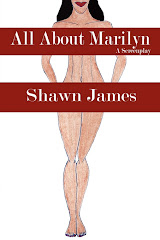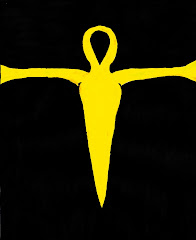Editors and Literary agents in the book publishing industry often have harsh words for Print On Demand authors and their books. From their vantage point they can easily see the flaws within the writing of a POD book. However, they don’t seem to understand the perspective the POD author is coming from resource wise. Publishing professionals seem to forget that they have a large support network of experienced professionals to help them develop the manuscripts they buy into books. Take away the network of copyeditors, administrative assistants, interns, fact checkers, lawyers, proofreaders and graphic artists at a publishing house and most of the manuscripts produced there would look just like the manuscripts used in POD books: rough, raw and not “publishable”.
While most publishing pros think 95 percent of manuscripts submitted to them aren’t “publishable”, they should note that most manuscripts within that 5 percent they find potential in aren’t “publishable” in their raw forms. It actually takes about two or three dozen people to polish that one author’s raw manuscript into a well-written book a publisher can sell. From literary agents and their assistants, to editors and their assistants, copyeditors, and proofreaders, an author’s manuscript is seen by a lot of eyes before customers ever sees it on a bookstore shelf.
Contrast this large network of support staff working behind the scenes at a publishing house to the small group of unpaid individuals a Print-On-Demand author has assisting them in preparing their books for publication. Usually a POD author has their manuscript read by friends and family; in most cases these people aren’t professional editors or MFAs in Creative Writing. So they won’t be able to find grammatical errors and style details like these experienced publishing professionals can. It’s a safe bet that the people working with a POD author probably won’t know what a participle is, how to figure out the difference between a passive/active sentence, or if punctuation is being used properly. To them it’s well written if it they’re entertained by the words on the page.
In addition, contrast the production budgets of POD book and a book at a publishing house. Publishing Houses spend on average of $20,000 to $50,000 just producing one title. A good chunk of this money is budgeted towards hiring that support staff needed to polish up that rough raw manuscript with potential into that great book. After editing and revisions, publishers also pay for a copyeditor who line edits each sentence word-for-word so paragraphs flow smoothly into each other. After copyediting, the publisher then pays for a proofreader to check all that grammar so the spelling and punctuation are perfect.
The average budget for a publishing a Print on Demand book is a couple of hundred to about two thousand dollars. And this lump sum is for everything including production, distribution, and promotion of the book. In addition, POD authors usually have to pay the POD publisher extra for editing their manuscript. However editing done by a POD publisher’s staff of free-lancers isn’t the thorough job a copyeditor would do line editing each sentence word-for-word or a proofreader would do scrutinizing punctuation and spelling.
When it comes to layout, the staff at the publishing house has a network contacts to help them find a graphic artist to design the interior and exterior of the book. The fact that they can afford to a graphic artist to design the layout for the interior pages of the book is a great advantage over the POD author. These artists create unique fonts and logos to make the book look distinct from others. Most POD authors format the interior page layout and logos themselves from fonts on word processing software or a POD house template.
After designing the interior layout, the publishing house also pays for printing unbound and bound galleys an author can read through to further line edit for errors. In most cases the POD author has to struggle with reading the PDF proof on a computer screen late at night after work. Yeah, most POD authors like me have these things called day jobs we have to do in addition to working on their books.
When it comes to cover design, the support staffs at the publishing houses have huge advantages over the limited resources of the POD author. First they can hire another graphic artist to create a single dynamic image that tells the story of the book. Second, they have a legal staff to negotiate a contract with said artist regarding terms of usage on the cover art and interior/logo fonts. Usually the terms of these contract state the art on the cover and those fonts in the logo are “work for hire” and the publisher retains “all ownership rights of use.” Most POD authors might be able to draw a picture or take a decent photograph however, most don’t know how to create a single dynamic image that tells the story of their book.(Trust me this takes skill.) Worse, on their limited budgets they can’t afford the rates ($250-$500 is what a cheap professional graphic artist charges for designing cover art and interior design.) And if they can afford a graphic artist to design for them, most POD authors don’t even know how to negotiate the permissions on rights use of art used on their cover. The terms in an art commission contract “artist retains all rights and exclusive usage of work” have bitten many a POD author on the butt. Many inexperienced POD authors are shocked to see the image used for their book cover on some other product like oh, another POD book cover!
The publishing house support staff also has tremendous pull in getting books exposure on the market. After the author reviews and approves the galleys, the publisher pays more money to a copywriter write up a press release and more to a publicist to have it distributed to all the major media outlets. The POD author most times doesn’t even plan for this stage because they don’t have the money for it. For reviews, the publishing house just sends out bound printed galleys to Kirkus, Publishers Weekly, the New York Times and magazines with the press release. These outlets will review most books offered to them from publishers free of charge. The POD author usually doesn’t have access to these review outlets. While Kirkus does review POD and self-published books, the authors have to pay $350 for this service. That’s expensive for an author working on a shoestring budget of a couple of hundred to two thousand dollars.
On distribution the author at a publishing house has the support of the publisher’s sales force. These people go out and sell to the big chains like Barnes & Noble, Borders, Target and Wal-Mart. Most bookstores like Barnes and Noble and Borders will stock copies of a house book due to the guarantee of returnability on unsold copies. POD publishers usually have to rely on online retailers outside of their website for sales and distribution because their books aren’t returnable. The few that are lucky can get a street vendor or a small bookstore to stock their books.
In spite of the best efforts of most authors, most new published books produced at publishing houses go out of print in six months to a year due to poor sales on the initial print run of 5000 copies. Most first-time POD books sell less than 100 copies in two years.
What’s funny is Authors who sold their book to the publishing house blame the publisher accusing them of making an “unpublishable” book. Ironically, they harshly criticize the editorial staff and their literary agent for doing a “bad” job of developing their manuscript for publication. In their eyes It’s the publisher’s fault for making a book that wasn’t good enough to sell: The cover picture is wrong, the fonts on the cover too small, the press release was sent out too late, the reviewers didn’t “get” the book, there weren’t enough book signings scheduled, there weren’t enough books at the book signings. It’s everyone else’s fault. They want to fire their agent, string up the editors and sue the publisher. That’s some gratitude for all those people who spent thousands of dollars and countless hours towards polishing that rough raw manuscript someone believed in into a well-written published book.
The POD author’s reaction to this failure: They have only themselves to blame. Because They had to do most of the work, most learn from their mistakes and work towards making that second book better than the first. That’s what I’m doing now. My first book wasn’t that great, but I’m taking what I learned there towards making my second book better.
So all those publishing pros taking shots at us POD authors: Leave us alone. A lot of authors including myself just want to see our books in print before we die. We have no other publishing venues to go to, and this publishing outlet allows us an opportunity to present our books to the public. We do the best we can to put our books together with the limited incomes and resources we have. I’m sure if we had access to thousands of dollars and a support staff of experienced pros to help us, our books would be just as polished as the ones published at the big houses. What’s a “publishable” manuscript is subjective and each person in the industry has their own tastes. For every bad POD author a publisher or agent can cite, I can name a popular author or two. Lauren Weisberger, Trisha R. Thomas, Candace Bushnell, Kavvya Vishwhanthan, James Frey or Rosalyn McMillan anyone?
Thursday, July 27, 2006
Subscribe to:
Post Comments (Atom)






1 comment:
I'm impressed with your site, very nice graphics!
»
Post a Comment